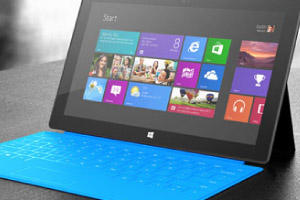We love free stuff, don’t we? And we’ll make the extra effort to get it too, but sometimes it’s the fine print that gets you. For instance: I still get junk mail from a lawn service I almost used 10 years ago (their mascot is just so cute, I can’t bring myself to unsubscribe)….
Earlier this year Microsoft made the decision to encourage updating to Windows 10 by offering the new version at no additional charge to anyone using Windows 7 or higher.
While this is a great opportunity to get into the latest version of the most popular operating system for business at no cost, there may be a few things to consider.
So, to help you out, we did our own research into the changes coming with Windows 10 and have gathered the most relevant info below (as well as links to more details if you want ‘em).
Important points about the Windows 10 release:
You’ll need to be in the latest version of Windows 7 (Service Pack 1) or Windows 8 (i.e. the 8.1 Update) to update
Following editions are excluded from the free update: “Windows 7 Enterprise, Windows 8/8.1 Enterprise, and Windows RT/RT 8.1. Active Software Assurance customers in volume licensing have the benefit to upgrade to Windows 10 enterprise offerings outside of this offer.”
If you’re not sure what version of Windows you’re using, you can check your version/eligibility here.
You must update within ONE YEAR of Win 10 being released to get it for free
Following update, Home editions will not be able to delay updates (Pro and Enterprise editions will still be able to defer updates).
For more information on this update check out the Microsoft site here: https://www.microsoft.com/en-us/windows/windows-10-specifications
But what does all this really mean? Basically that as long as you’re own Windows 7 or higher (with a few exceptions) you’ll be able to update–no questions asked–within one year of Windows 10’s release for free. After the year, it will cost you between $99 and $199 USD to upgrade. In addition, if you’re using a Home edition of Windows it’ll begin automatically updating itself and you won’t be able to postpone those updates anymore (once you’re in Windows 10). Oh yeah, and the start menu is back!
Important stuff you need to know as an inFlow user:
For most of us, the upgrade shouldn’t have any effect on inFlow (yatzee!) because as of v3.2.1 inFlow supports Windows 10, but PLEASE make a backup of your data to another drive before reformatting/upgrading your version of Windows.
I say again MAKE A BACKUP! 🙂 Put it somewhere safe! We don’t have access to your data over here so this step is super crucial if you’re planning to upgrade your computer.
Anyone with Windows 7 using SQL Server 2005 will have to uninstall inFlow before upgrading to Windows 10 and then re-install (because of compatibility issues with SQL Server 2005). This is pretty easy and can be done from the START menu by searching “Programs and Features” and once open, choosing to uninstall inFlow Inventory.
Not sure which version of SQL you’re using? You can check the version of SQL Server through the START menu by searching “Programs and Features.” In that window, look for “Microsoft SQL Server” and check the version (it will either be 2005 or 2008 R2). If you’re in 2008 R2 or 2012 you’re golden, no extra steps required).
So bottom line: if you’re planning to take advantage of the upgrade from Windows 7 to Windows 10 that’s great, but take a few minutes to double check your SQL Server version (as noted above) before you upgrade. Most of us won’t be affected but if you don’t, the upgrade could break inFlow and that’s no fun at all!
If you do hit snags please get in touch so we can help get you back up and running as quickly as possible!
Want to join the discussion? Head to our Facebook page and tell us about the best thing YOU ever got for free!





I am planning upgrading to windows 10
Hey jay,
I hope everything goes smoothly with the transition!
Cheers,
Jared